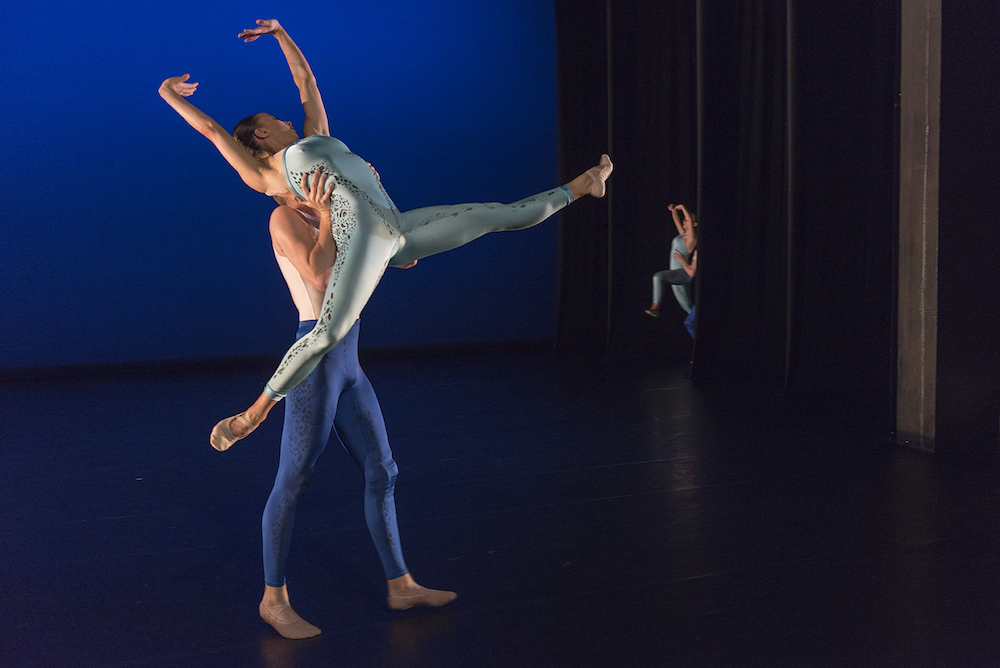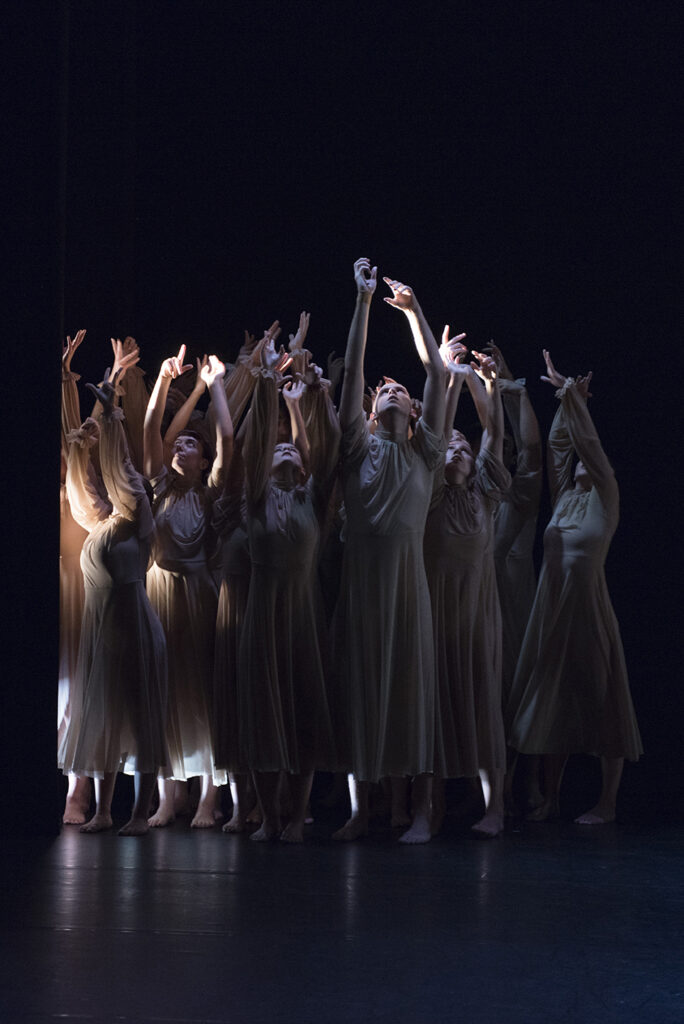Changes to programming give audiences more opportunity to appreciate the impressive physicality of WAAPA’s dance students, says Lauren Catellani.
Half the length, double the impact
20 November 2020
- Reading time • 5 minutesDance
More like this
- How to watch ballet
- STRUT Dance comes of age
- Fairytale leaps to life with fun twist
‘Rise: Program A’, Western Australian Academy of Performing Arts dance students ·
Geoff Gibbs Theatre, 16th November ·
WAAPA’s annual “Rise” season is its final for the year, and is typically a marathon for the audience, with four works squeezed into one program.
But 2020 has seen many changes to the way things are normally done and in this case, the decision to split the four works into two programs has provided a breath of fresh air and a chance to appreciate each work in more detail.
The first program, which opened on Monday night, is an excellent showcase of the skills of this year’s graduating dancers.
The evening kicks off with Graeme Watson’s 1987 work Bodyline, remounted by WAAPA’s Sue Peacock and Michael Whaites and performed by 13 second and third year students. The work focuses on extending the boundaries of the body and finding ways for it to disperse into space. With its focus on strong, straight lines and soft, effortless transitions, the movement style is typical of the era. The dancers in the opening night cast absorbed the style and executed it in a detailed manner, a credit to Whaites and Peacock’s direction.

In simple unitards the dancers become echoes of one another, multiplying in the space as the choreography progresses. Gradually the work becomes more complex and kaleidoscopic; groups of dancers revolve around each other, extending out into the space in symmetrical patterns. The effect is mesmerising.
Though the choreography is challenging as limbs become muddled and bodies blur, the dancers performed flawlessly. Particularly compelling in their execution of the demanding repertoire were Macon Riley and Ada Sayasane.

Third year students closed the show with A Moving Portrait, created for this season by guest choreographer Raewyn Hill, artistic director of Co3 Contemporary Dance. Drawing inspiration from Théodore Géricault’s Romantic painting, The Raft of Medusa (1818-19), the work captures the brutal and raw emotion evoked profusely in the painting.
The 22 dancers wear long, flesh toned, mesh dresses, inspired by the sombre and dramatic colour palette of Géricault’s work. This costume not only provides a visual connection to the bodies in the painting, but accentuates Hill’s distinctive fluid and expressive movement aesthetic. The dancers seem compelled to move and are driven by the punchy and persistent score, designed by Eden Mulholland.
In clever, considered ways the dancers shift in space continuously; folding and unfolding in canon, weaving, gathering, being held and being draped over one another. The movement becomes highly physical, with dancers flung and swallowed by the large group. This impressive physicality is juxtaposed and balanced by brief images of Romantic-style gestures and softer, tender moments.
Hill’s work highlights this group of graduates’ commitment and ability to build and hold energy as a group. The impact of this performance is credit to the collective efforts of the dancers and their ability to capture the intent of Hill’s relentless choreography.
For both performers and viewers, this double bill is well-constructed, giving the dancers the opportunity to immerse themselves in two distinct and contrasting movement styles. The two works were well received by Monday night’s audience, who appeared impressed by the program and grateful to be watching live performance again.
“Rise: Program A” runs until 19 November. Program B takes place 24-26 November. Tickets are by invitation only.
Pictured top: Graduating students performing Raewyn Hill’s ‘A Moving Portrait’. Photo: Christophe Canato
Like what you're reading? Support Seesaw.






